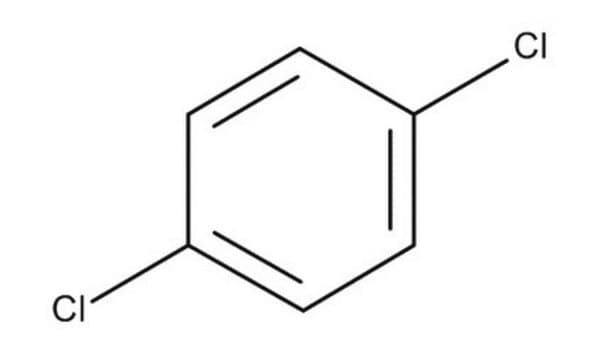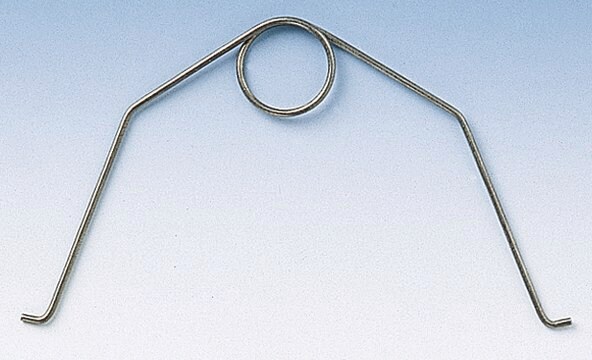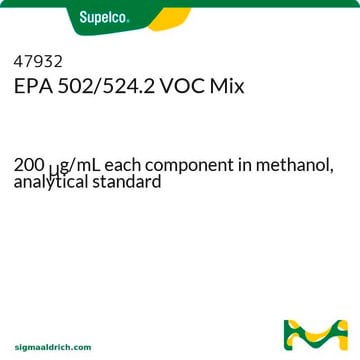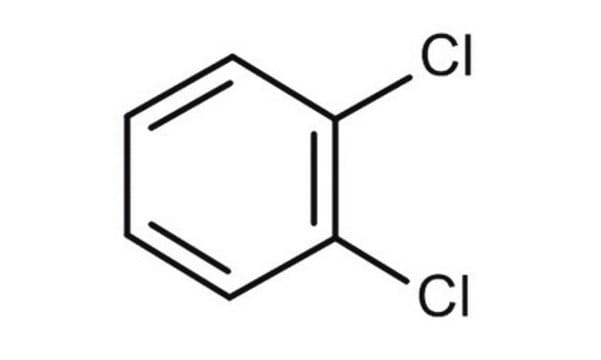D56829
1,4-Dichlorobenzene
≥99%
Sinónimos:
1,4-Dichlorobenzene, Di-chloricide, Dichlorocide, PDB, Paradichlorobenzene, p-Chlorophenyl chloride, p-Dichlorobenzene, para-Dichlorobenzene
About This Item
Productos recomendados
densidad de vapor
5.07 (vs air)
Nivel de calidad
presión de vapor
1.03 mmHg ( 25 °C)
Análisis
≥99%
formulario
crystalline solid
bp
173 °C (lit.)
mp
52-54 °C (lit.)
densidad
1.241 g/mL at 25 °C (lit.)
cadena SMILES
Clc1ccc(Cl)cc1
InChI
1S/C6H4Cl2/c7-5-1-2-6(8)4-3-5/h1-4H
Clave InChI
OCJBOOLMMGQPQU-UHFFFAOYSA-N
Información sobre el gen
human ... CYP2A6(1548)
mouse ... Cyp2a5(13087)
¿Está buscando productos similares? Visita Guía de comparación de productos
Palabra de señalización
Warning
Frases de peligro
Consejos de prudencia
Clasificaciones de peligro
Aquatic Acute 1 - Aquatic Chronic 1 - Carc. 2 - Eye Irrit. 2
Código de clase de almacenamiento
11 - Combustible Solids
Clase de riesgo para el agua (WGK)
WGK 2
Punto de inflamabilidad (°F)
Not applicable
Punto de inflamabilidad (°C)
Not applicable
Equipo de protección personal
Eyeshields, Faceshields, Gloves, type P3 (EN 143) respirator cartridges
Certificados de análisis (COA)
Busque Certificados de análisis (COA) introduciendo el número de lote del producto. Los números de lote se encuentran en la etiqueta del producto después de las palabras «Lot» o «Batch»
¿Ya tiene este producto?
Encuentre la documentación para los productos que ha comprado recientemente en la Biblioteca de documentos.
Los clientes también vieron
Nuestro equipo de científicos tiene experiencia en todas las áreas de investigación: Ciencias de la vida, Ciencia de los materiales, Síntesis química, Cromatografía, Analítica y muchas otras.
Póngase en contacto con el Servicio técnico













